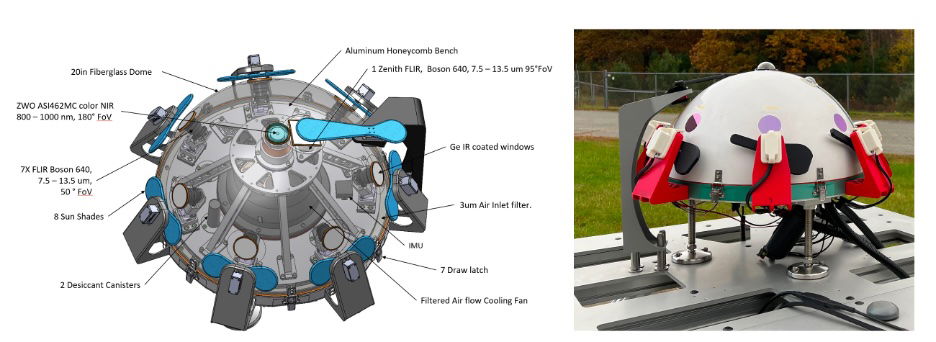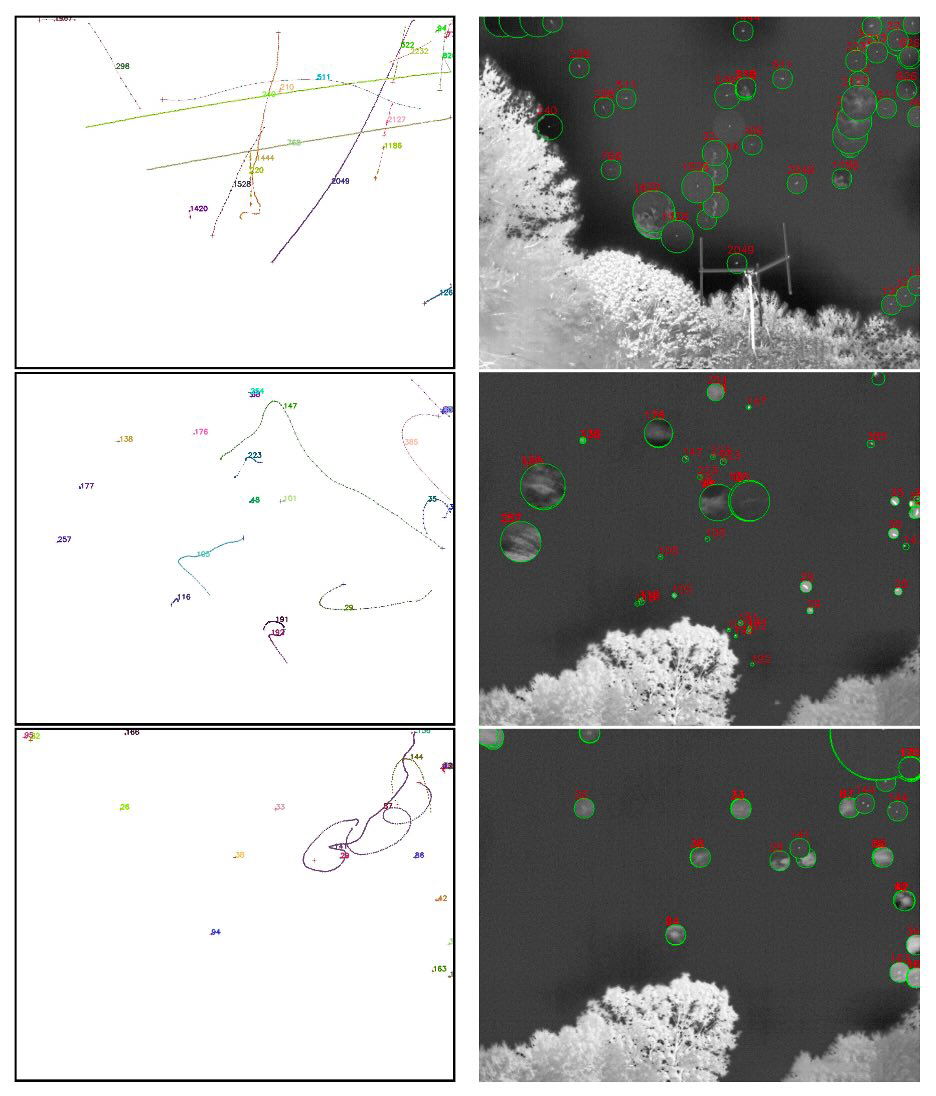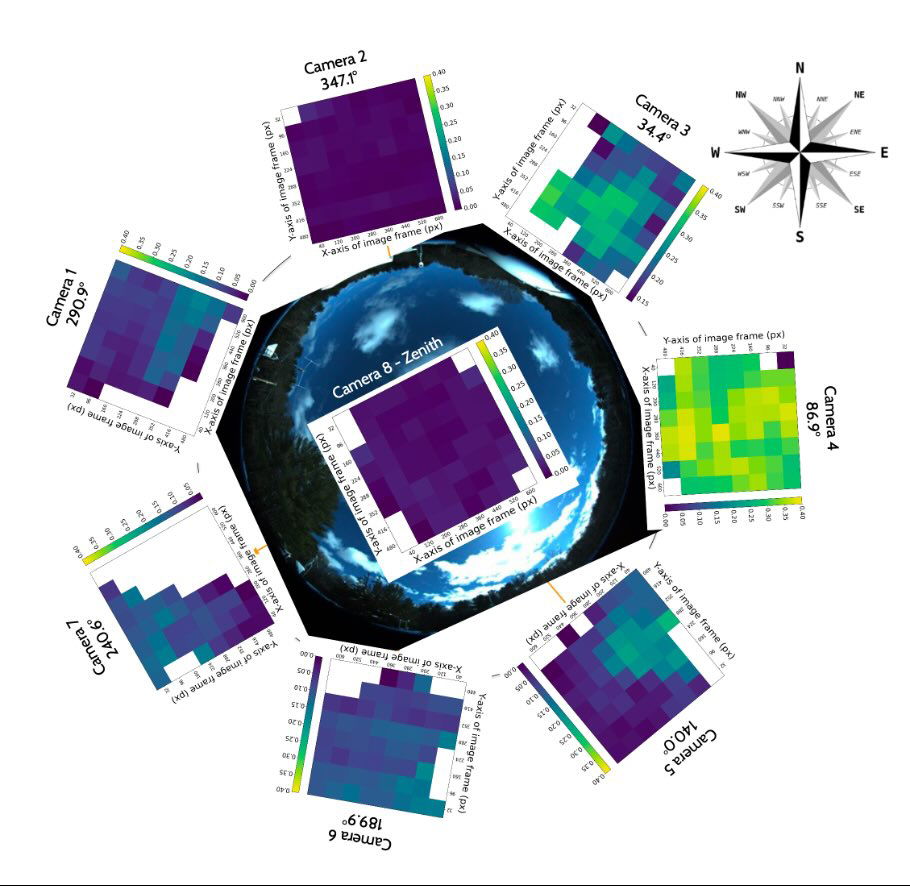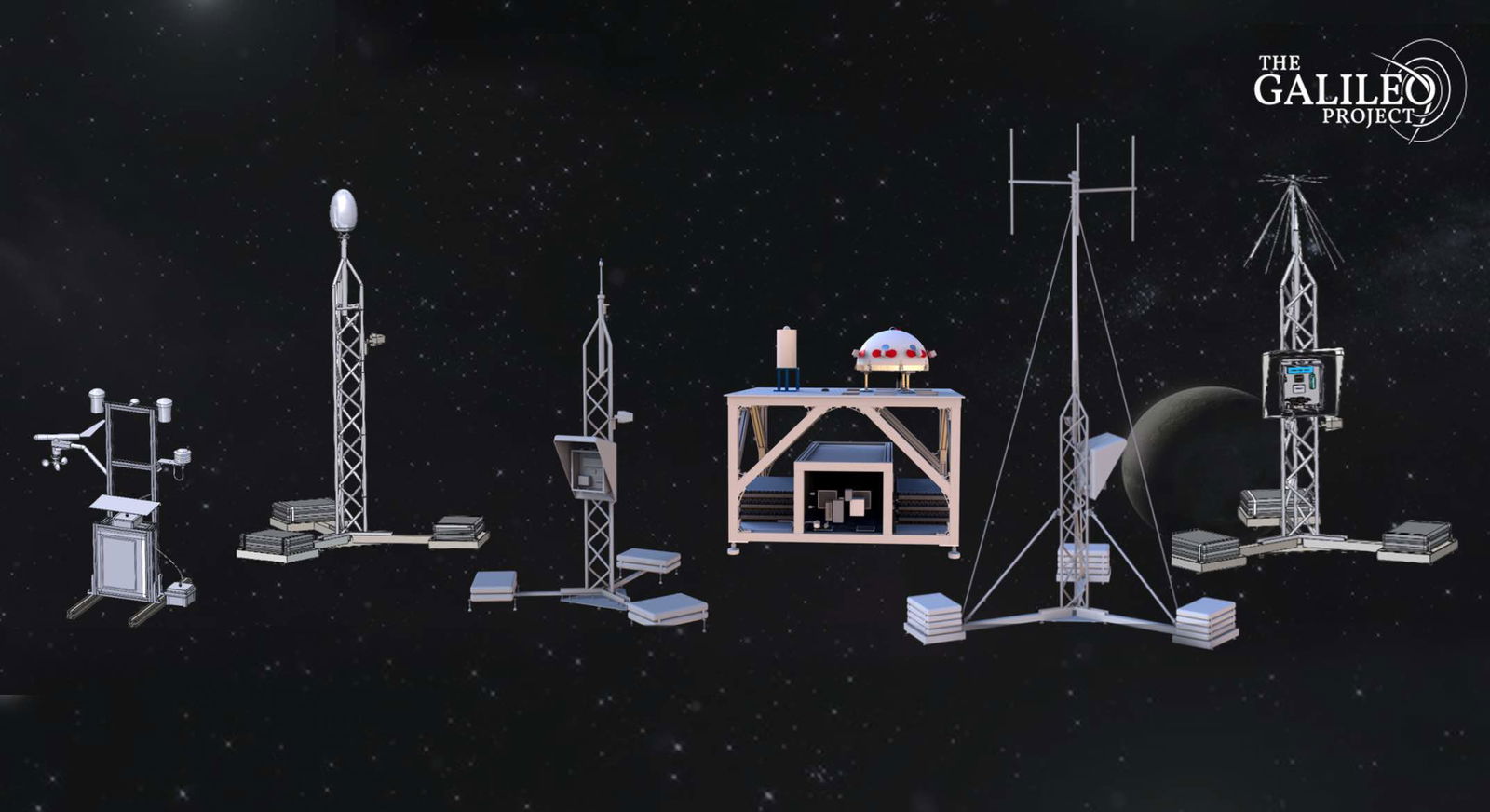After more than three years of planning, hardware assembly, data collection, and analysis, the Galileo Project, under my leadership, released the commissioning data from its first Observatory at Harvard University in a new paper (posted here and currently under peer review), with my Galileo Project postdoc Dr. Laura Domine as first author.
The Galileo Project Observatory is the first of its kind. Standard astronomical observatories focus on a small portion of the sky at any given time, seeking sources at great distances and ignoring objects flying overhead. The Galileo Project research team developed an original design of an array of sensors that monitor the entire sky at all times and collect infrared, optical, radio, magnetic, and audio data.
Altogether, the Galileo Project Observatory is recording a continuous movie of the sky. The data is uploaded to a computer system and subsequently analyzed by machine-learning algorithms. The computer software is optimized to identify outliers among familiar insects, birds, leaves, clouds, balloons, drones, airplanes, and satellites that appear in the data stream.
The Galileo Project was inaugurated on July 26, 2021. Our exceptional research team took two years to design and assemble the hardware components, another half a year to calibrate the instruments, and a full year to analyze the preliminary commissioning data collected from January through May 2024. This data contains half a million objects observed during these five months. The Galileo Project team is currently in the process of establishing two additional observatories in other locations, with the goal of tripling its data collection rate within the next six months.


The workhorse of the uniquely designed GP Observatories is called Dalek, an array of eight uncooled infrared cameras placed on half a sphere. Despite its name being inspired by the famous villains of Doctor Who, Dalek more closely resembles the head of the fictional robot character R2-D2 in the film Star Wars.
U.S. government officials have publicly admitted the puzzling appearance of unfamiliar objects near Earth. Reports on Unidentified Aerial Phenomena (UAP) from the Office of the Director of National Intelligence (DNI), Avril Haines, led in 2022 to the establishment of a new office under DNI and the Department of Defense called the All-Domain Anomaly Resolution Office (AARO).
“To date, AARO has not discovered any verifiable information to substantiate claims that any programs regarding the possession or reverse-engineering of extraterrestrial materials have existed in the past or exist currently,” the office has previously conveyed as its official position on claims that extraterrestrial technologies might have been recovered and studied by the United States in the past.
As of now, there is little publicly available scientific data on UAPs with flight properties that lie outside the performance envelope of known phenomena. The Galileo Project Observatories offer an array of multimodal, multispectral sensors that continuously monitor the sky and acquire UAP data via a rigorous long-term census of all aerial phenomena to check for any object that may not be of terrestrial origin.
In addition to performing intrinsic and thermal calibrations, Dalek was commissioned through a novel extrinsic calibration method. The Galileo Project radio sensor collected airplane positions from Automatic Dependent Surveillance-Broadcast (ADS-B) data. Using machine learning software, such as the You Only Look Once (YOLO) model for object detection and the Simple Online and Realtime Tracking (SORT) algorithm for trajectory reconstruction, the GP team established a baseline for assessing the performance of the GP Observatory over five months of field operation.


Using an automatically generated data set derived from ADS-B-data, a dataset of synthetic three-dimensional trajectories, and a hand-labeled real-world dataset, the GP team found an acceptance rate (fraction of airplanes passing in the effective field of view of at least one camera that is recorded) of 41% for ADS-B equipped aircraft and a mean frame-by-frame aircraft detection efficiency (fraction of recorded airplanes in individual frames which are successfully detected) of 36%. The detection efficiency depends on weather conditions, distance, and object size.


Approximately half a million trajectories of aerial objects were reconstructed during the five-month observation period. These trajectories were analyzed with an outlier search algorithm. About 16% of the monitored trajectories were flagged as outliers and manually examined. From these 80,000 outliers, 144 trajectories remained ambiguous.
These are likely mundane objects but cannot be further identified without distance information. The observed count of ambiguous outliers combined with systematic uncertainties yields an upper limit of 18,271 outliers for the five-month observing period at a 95% confidence level.


The main limitation of this commissioning data analysis stems from not knowing the distances to the objects that were monitored. In the coming months, the GP team plans to use multiple Dalek units separated by a few miles, to measure the distance of aerial objects by observing them from different directions. Similarly, humans have two eyes because natural selection favored stereoscopic vision in allowing them to assess the distance of predators.
Following these commissioning results, as reported in the exciting paper available here, the GP research team is now working around the clock on a series of additional papers, including a better analysis of outliers identified by our Observatory.
A public hearing in the U.S. Congress titled “UAP: Exposing the Truth” will be broadcast live (available online here) at 11:30 AM ET on Wednesday, November 13, 2024. When watching it, we must remember that politicians’ expertise is in government and national security rather than interstellar matters.
What lies outside the Solar system happens to be my day job and the research focus of the Galileo Project. Rather than relying solely on testimonies that often pertain to classified information, the Galileo Project research team aims to follow the evidence from its sensors wherever it leads and share the data openly with the public. This standard scientific practice is far more informative than political maneuvers to disclose classified information from stubborn government agencies.
A more robust answer to Fermi’s old question, “Where is everybody?” will likely come from scientists, rather than politicians or journalists.
Additional related Galileo Project papers can be found here.
Avi Loeb is the head of the Galileo Project, founding director of Harvard University’s – Black Hole Initiative, director of the Institute for Theory and Computation at the Harvard-Smithsonian Center for Astrophysics, and the former chair of the astronomy department at Harvard University (2011-2020). He is a former member of the President’s Council of Advisors on Science and Technology and a former chair of the Board on Physics and Astronomy of the National Academies. He is the bestselling author of “Extraterrestrial: The First Sign of Intelligent Life Beyond Earth” and a co-author of the textbook “Life in the Cosmos”, both published in 2021. The paperback edition of his new book, titled “Interstellar”, was published in August 2024.

